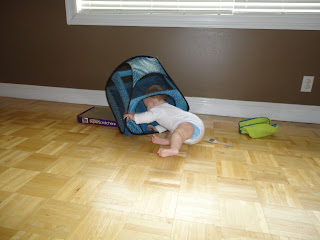In yesterday's post, I mentioned and quoted Rousseau and his belief in a child-centered education, but I realized that many, even those who have studied educational philosophies and educational psychology may not realize Rousseau's influence in this field. (I say this as he was not mentioned in my initial educational psych courses, but he did play a prominent role in my political thought courses.) Given that I have not discussed a philosopher or researcher in some time, I will devote this Science Friday to Rousseau's work and subsequent development of his beliefs toward education.
Much of Jean-Jacques Rousseau's work was focused on the "natural man." He believed that man, left to his own devices, is good but is corrupted by society, as he more eloquently states in his famous beginning line to The Social Contract, "Man is born free, and everywhere he is in chains." With this idea in mind, it makes sense that Rousseau's work on child development and education would focus on natural education, free from societal influences.
In Emile, written in 1762,Rousseau describes a fictional boy (Emile) whom he raises and tutors according to what he believes is nature's plan for child development. Rousseau believed that education happens naturally, through everyday experiences, as Rousseau stated, "We begin to learn when we first begin to live; our education begins with ourselves, our first teacher is our nurse."
According to this theory, it not is necessarily to teach towards an ultimate goal of being "a magistrate, a soldier, nor a priest." Indeed, nature alone allows children to develop in their own time without the outside assistance of adults. Rousseau identified four stages (from infancy to adolescence) of child development and the natural urges that ultimately lead to mastery of skills associated with each stage. Rousseau argued that education must be individualized, meeting the developmental level and natural curiosities of each person. Thus, constant observation of the individual's abilities and interests is essential.
Here, I will explain Rousseau's beliefs about infancy, as Q-ball (9 months yesterday!) is in this stage.
Here, I will explain Rousseau's beliefs about infancy, as Q-ball (9 months yesterday!) is in this stage.
- Infancy (birth to 2):
- Importance of Breastfeeding: Before I reviewed Emile for this post, I had never heard about Rousseau's stance on breastfeeding, but I found it very interesting, and will make a special point of discussing it here. Rousseau strongly believed that there is "no substitute for a mother's love," and writes what I consider to be an angry rant towards mothers to refuse to nurse their babies and, instead, intrust them to midwives. In fact, he argues that when mothers begin to breastfeed their own children "mutual affection" will be restored to society and a "natural feeling will be restored to every heart."
- Sensory Exploration: Babies expereince the world through their senses. They want to touch everything, which allows them to learn about the temperatures, weights, and textures of objects. Rousseau removed all unsafe objects from his house, allowing Emile to touch anything he wanted, even bringing Emile objects that he desired but were out of reach. However, he did not allow Emile to rule over him- Rousseau only granted Emile's wishes when they furthered his learning.
- Language Development: The first signs of learning to speak occur during this stage. Rousseau did not think it was necessary to force or teach language- it is a natural occurrence. In fact, he believed that lessons would backfire as the grammar infants develop is often better than that of adults. Additionally, by intervening, adults do not allow the inevitable self-correction of the student.
In our household, we share Rousseau's and Montessori beliefs toward child-centered education, although we would not go as far as to say that society will corrupt Q-ball. We have worked hard to created a "prepared environment" in our home and largely allow Q-ball to go for whatever she wants to explore. We work to allow her to discover an object's characteristics and purposes on her own. We certainly are not perfect in our attempts, but we hope that our efforts increase her own desires for self-exploration and love of learning as time goes on.
Sources:
Crain, W. (2011). Theories of development: Concepts and applications. NY: Prentice Hall.
Roehrs, H. (2000). Maria Montessori. PROSPECTS: The quarterly review of comparative
education. Retrieved from http://www.ibe.unesco.org/fileadmin/user_upload/archive/publications/ThinkersPdf/montesse.pdf.
education. Retrieved from http://www.ibe.unesco.org/fileadmin/user_upload/archive/publications/ThinkersPdf/montesse.pdf.
Rousseau, J. (1762). Emile. (B. Foxley, trans.) London: J.M. Dent and Sons, 1948.








































